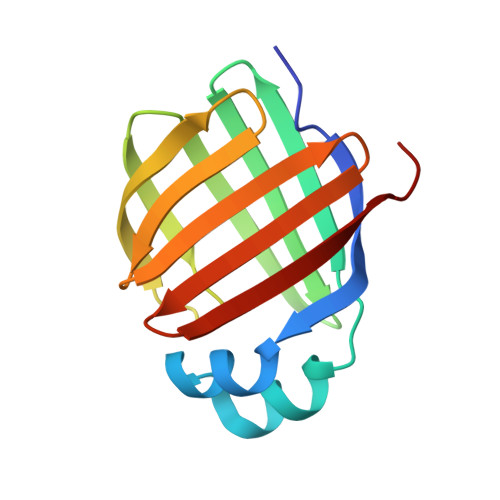Utility of anion and cation combinations for phasing of protein structures.
Sharma, A., Yogavel, M., Sharma, A.(2012) J Struct Funct Genomics 13: 135-143
- PubMed: 22562242
- DOI: https://doi.org/10.1007/s10969-012-9137-3
- Primary Citation of Related Structures:
3B2H, 3B2I, 3B2J, 3B2K, 3B2L, 3VG2, 3VG3, 3VG4, 3VG5, 3VG6, 3VG7 - PubMed Abstract:
We report the use of anionic (I(-)), cationic (Ba(2+), Cd(2+)) and ionic mixtures (I(-) plus Ba(2+)) for derivatizing liver fatty acid binding protein (LFABP) crystals. Use of cationic and anionic salts in phasing experiments revealed distinct non-overlapping sites for these ions, suggesting exclusive binding regions on LFABP. Interestingly, cations of identical charge and valency (like Ba(2+) and Cd(2+)) bound to distinct pockets on the protein surface. Furthermore, a mixture of salts containing both I(-) and Ba(2+) was very useful in phasing experiments as these oppositely charged ions bound to different regions of LFABP. Our data therefore suggest that cationic and anionic salt mixtures like BaCl(2) with NH(4)I or salts like CdI, BaI where each ion has a significant anomalous signal for a given X-ray wavelength may be valuable reagents for phasing during structure determination.
- Structural and Computational Biology Group, International Centre for Genetic Engineering and Biotechnology, New Delhi, India.
Organizational Affiliation:


















